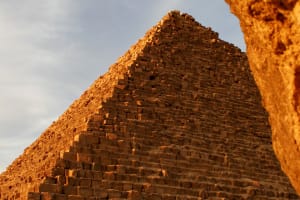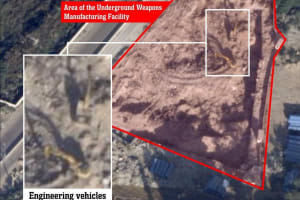Yad Vashem uses storytelling to educate younger generation about the Holocaust

Israel's Yad Vashem Holocaust Museum in Jerusalem is widely regarded as the world’s foremost institution dedicated to preserving the memory of the Holocaust, during which six million Jews were murdered by the Nazis between 1933 and 1945. With the number of elderly survivors rapidly diminishing, the museum’s role in safeguarding their stories has become more vital than ever.
Yad Vashem is increasingly utilizing modern technology and compelling storytelling to educate younger generations about one of history’s darkest chapters, amid growing global ignorance and rising Holocaust denial.
Earlier this month, Yad Vashem’s new outdoor amphitheater debuted an immersive audiovisual presentation highlighting the vibrant Jewish communities that once flourished across Europe before the Holocaust.
One resident visiting from Tel Aviv praised the show.
“For our kids, this was the most interesting part of the day here,” said Noa. “A lot of what we saw was too graphic for them, and they didn’t have the context to understand it. This show was much more interesting and engaging for them. I’d recommend it for anyone coming here with kids.”
The holocaust memorial center has also been developing new storytelling installations aimed at engaging younger visitors. Presented in both Hebrew and English, these exhibits are designed to bring to life the personal stories behind many of the museum’s artifacts.
Holocaust institutions like Yad Vashem are not only dedicated to preserving the memory of the Holocaust –they also play a critical role in combating contemporary antisemitism. By highlighting the deadly consequences of genocidal Jew-hatred, which led to the murder of six million Jews during World War II, these institutions aim to raise awareness and prevent history from repeating itself.
Yad Vashem Chairman Dani Dayan emphasized that there is no modern substitute for the personal testimonies of Holocaust survivors.
“There is nothing as formative in Holocaust education as sitting in front of a survivor and hearing his or her story firsthand,” Dayan said during an interview with The Times of Israel. “It’s like standing on a bridge, with one end in your living room and the other end in Auschwitz. There is no substitute for that.”
Today, only about 220,000 Holocaust survivors remain worldwide. Approximately half live in Israel, with the rest primarily residing in the United States, Canada, Australia, and the United Kingdom.
“Our new installations deal with two aspects of Holocaust education that aren’t usually stressed: identity and significance,” Dayan said. “We are not just telling a story, we are touching on issues of resilience, faith, and finding meaning to survive.”
Dayan also responded to recent concerns in Israel that Yad Vashem is attempting to rebrand itself as “cool” in its efforts to engage younger audiences.
“We made bold decisions that were not easy and can sometimes be misunderstood,” Dayan admitted. “We have to find appropriate ways to convey these experiences to younger generations as well.”
However, Scott Ury, associate professor of Jewish History at Tel Aviv University, believes that finding the right approach to educate younger generations about the Holocaust can be challenging.
“When discussing these questions, you need to be especially careful about what is appropriate for different ages,” Ury stated. “A lot of thought must be given to the point you are trying to teach. I hope they’ll be able to teach the messages of the Holocaust sensitively in an age-appropriate fashion.”
Dayan believes that Yad Vashem is striking the right balance between traditional education and innovative storytelling.
“We have to provide an emotional experience to our visitors, not just an intellectual one,” Dayan argued. “We want Yad Vashem to be a place that attracts people to come on their own initiative, not just because they’re brought by schools or tour operators. We hope that families will come for a full day, or even several visits, to experience what we have to offer.”
In 2024, Yad Vashem began utilizing artificial intelligence technology to assist in the identification of Holocaust victims.
At the time, Dr. Alexander Avraham, director of the Hall of Names at Yad Vashem, explained the benefits of using AI for Holocaust research.
“The use of artificial intelligence helps the study of the Holocaust in many different ways. The technology helps Yad Vashem to review in a short time hundreds of hours of testimony given by Holocaust survivors over the years, to extract from them new names of the murdered and details that have never been revealed,” Avraham said.

The All Israel News Staff is a team of journalists in Israel.
You might also like to read this:
















